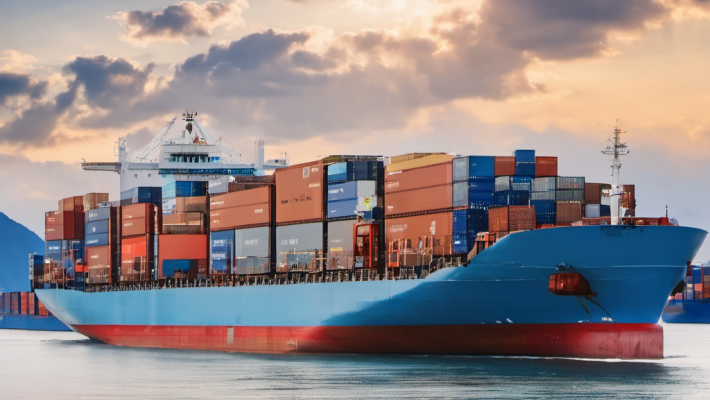Freight Forwarder Insights
Huin International Logistics Latest Articles
Comprehensive Sea Freight and Logistics Solution
The goal is to design a seamless and efficient sea freight and logistics solution that ensures the secure transportation of goods from one port to another. This solution will address customs clearance, cargo insurance, and real-time tracking to mitigate potential risks and streamline the process.
Detailed Outline of the Solution
- Initial Planning and Coordination
- Needs Assessment: Determine the type, volume, and nature of the goods to be shipped.
- Route Planning: Select the optimal shipping route considering factors such as transit time, cost, and potential bottlenecks.
- Carrier Selection: Choose a reliable shipping line based on service quality, cost, and frequency of sailings.
- Booking and Documentation
- Booking Cargo Space: Reserve space with the selected carrier. Ensure availability of the appropriate container type.
- Document Preparation: Prepare and review all necessary documents:
- Bill of Lading (B/L): Serves as a contract of carriage and a receipt for the goods.
- Commercial Invoice: Details the value of the goods.
- Packing List: Describes the contents, dimensions, and weight of each package.
- Certificate of Origin: Verifies the origin of the goods.
- Insurance Certificate: Provides coverage details for cargo insurance.
- Export and Import Declarations: Required by customs authorities at both the origin and destination ports.
- Cargo Insurance
- Insurance Coverage: Obtain comprehensive cargo insurance to protect against potential losses, damages, or delays.
- Insurance Policy Documentation: Ensure the insurance certificate is accurately filled out and corresponds with the shipment details.
- Pre-Shipping Arrangements
- Export Haulage: Arrange transportation from the shipper’s premises to the port of origin.
- Cargo Handling: Ensure proper packaging, labeling, and securing of goods in the container.
- Customs Clearance (Export)
- Customs Documentation: Submit export declarations and required documents to the customs authorities.
- Customs Inspection: Prepare for potential inspections and ensure compliance with export regulations.
- Payment of Duties and Taxes: Pay any applicable export duties and taxes.
- Port Operations (Loading)
- Terminal Handling: Coordinate with port authorities for the efficient handling and loading of the container onto the vessel.
- Container Sealing: Ensure the container is sealed with a tamper-evident seal for security.
- Sea Freight Transport
- Real-Time Tracking: Utilize GPS and satellite tracking technologies to monitor the shipment's progress in real-time.
- Communication Updates: Provide regular updates to the shipper and consignee regarding the shipment status.
- Arrival and Customs Clearance (Import)
- Port Handling (Unloading): Coordinate the unloading and handling of the container at the destination port.
- Customs Documentation Submission: Submit import declarations and necessary documents to local customs authorities.
- Customs Duties and Taxes: Calculate and pay any applicable import duties, taxes, and fees.
- Customs Inspection: Facilitate any required inspections and ensure compliance with import regulations.
- Post-Arrival Procedures
- Import Haulage: Arrange transportation from the destination port to the consignee’s premises.
- Final Delivery: Ensure timely and secure delivery of goods to the final destination.
- Acknowledgement of Receipt: Obtain confirmation from the consignee that the goods have been received in good condition.
Potential Risks and Mitigation
- Delays:
- Cause: Port congestion, bad weather, customs hold-ups.
- Mitigation: Plan for buffer times, use ports with lower congestion, and monitor weather forecasts.
- Damage or Loss of Cargo:
- Cause: Poor handling, accidents, theft.
- Mitigation: Proper packaging, comprehensive cargo insurance, and secure transport arrangements.
- Documentation Errors:
- Cause: Inaccurate or incomplete paperwork.
- Mitigation: Double-check all documents, use experienced freight forwarders, and employ digital document management systems.
- Regulatory Non-Compliance:
- Cause: Changing regulations, non-compliance with customs requirements.
- Mitigation: Stay updated on regulations, employ customs brokers, and ensure thorough documentation review.
- Financial Risks:
- Cause: Currency fluctuations, unexpected fees.
- Mitigation: Use forward contracts for currency exchange, and get detailed quotes to understand all potential costs.
Conclusion
This comprehensive sea freight and logistics solution outlines a structured approach to shipping goods from one port to another, ensuring efficiency, compliance, and security. By following these detailed steps and addressing potential risks, shippers can achieve a reliable and streamlined transportation process, ultimately enhancing their global supply chain
